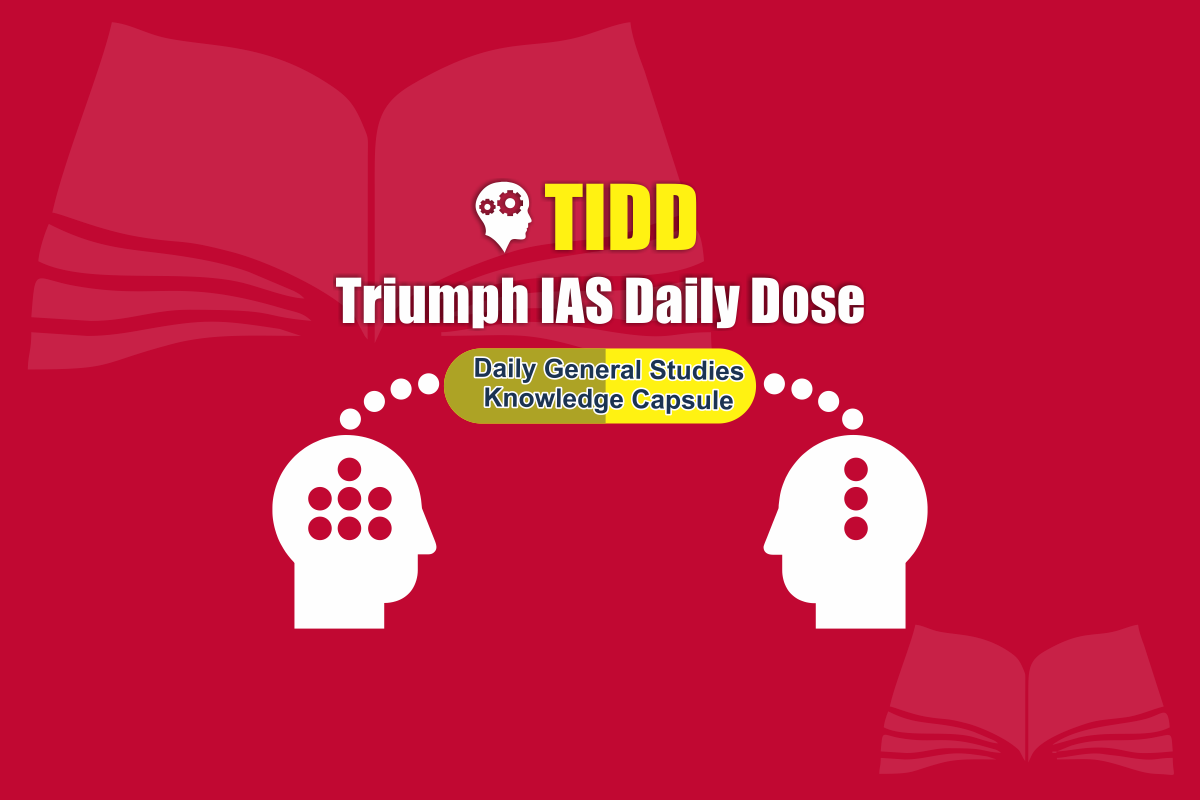Under TriumphIAS daily dose (TIDD), you will be provided GS matter on each subject (one by one) on daily basis. The matter covered under this section will be short and concise and will be helpful for getting a quick knowledge of the subject. We are starting with Indian Polity and Constitution and over the period of time all the subjects of general studies will be covered.
Indian Polity and Governance
- Constitution
- Constitution is the foundational law of a country which ordains the fundamental principles on which the government (or the governance) of that country is based. It lays down the framework and principal functions of various organs of the government as well as the modalities of interaction between the government and its citizens.
- With the exception of the United Kingdom (U.K.), almost all democratic countries possess a written constitution. India also possesses an elaborate written constitution, which was enacted by a constituent assembly specifically set up for the purpose.
- Our Constitution
- Our present constitution- the first Constitution of India framed and given to themselves by the people of India was adopted by the Constituent Assembly on 26 November 1949.
- It came into full operation with effect from 26January; 1950.The Constitution as originally adopted had 22 parts, 395 articles and 8 schedules. Its present text is as amended from time to time.
- Evolution of Indian Constitution
Although the systems of ancient India do have their reflections in the Constitution of India, the direct sources of the Constitution lie in the administrative and legislative developments of the British period. A concise and chronological description of the Acts, documents and events that culminated in the framing of the world’s largest written Constitution is given below:
- Administrative & Legislative Reforms Before 1857
Regulating Act of 1773
- This Act was based on the report of a committee headed by the British Prime Minister Lord North. Governance of the East India Company was put under British Parliamentary control.
- The Governor of Bengal was nominated as Governor General for all the three Presidencies of Calcutta, Bombay and Madras. Warren Hastings was the first such Governor General.
- A Supreme Court was established in Calcutta (now Kolkata).
- Governor General was empowered to make rules, regulations and ordinances with the consent of the Supreme Court. Pitts India Act of 1784
- It was enacted to improve upon the provisions of Regulating Act of 1773to bring about better discipline in the Company’s system of administration.
- A 6-member Board of Controllers was setup which was headed by a minister of the British Government. All political responsibilities were given to this board.
- Trade and commerce related issues were under the purview of the Court of Directors of the company.
- Provinces had to follow the instructions of the Central Government, and Governor General was empowered to dismiss the failing provincial government.
- Charter Act of 1793 :
- Main provisions of the previous Acts were consolidated in this Act. “.. Provided for the payment of salaries of the members of the Board of Controllers from Indian revenue.
- Courts were given the power to interpret rules and regulations.
- Charter Act of 1813 .
- Trade monopoly of the East India Company came to an end.
- Powers of the three Councils of Madras, Bombay and Calcutta were enlarged, they were also subjected to greater control of the British Parliament.
- The Christian Missionaries were allowed to spread their religion in India.
- Local autonomous bodies were empowered to levy taxes.
- Charter Act of 1833
- The Governor General and his Council were given vast powers. This Council could legislate for the whole of India subject to the approval of the Board of Controllers.
- The Council got full powers regarding revenue, and a single budget for the country was prepared by the Governor General.
- The East India Company was reduced to an administrative and political entity and several Lords and Ministers were nominated as ex-officio members of the Board of Controllers.
- For the first time the Governor-General’s Government was known as the ‘Government of India’ and his Council as the ‘Indian Council’.
- Charter Act of 1853
- This was the last of the Charter Acts and it made important changes in the system of Indian legislation.
- This Act followed a report of the then Governor General Dalhousie for improving the administration of the company.
- A separate Governor for Bengal was to be appointed. Legislative and administrative functions of the Council were separately identified.
- Recruitment of the Company’s employees was to be done through competitive. exams.
- British Parliament was empowered to put Company’s governance of India to an end at any suitable time.

